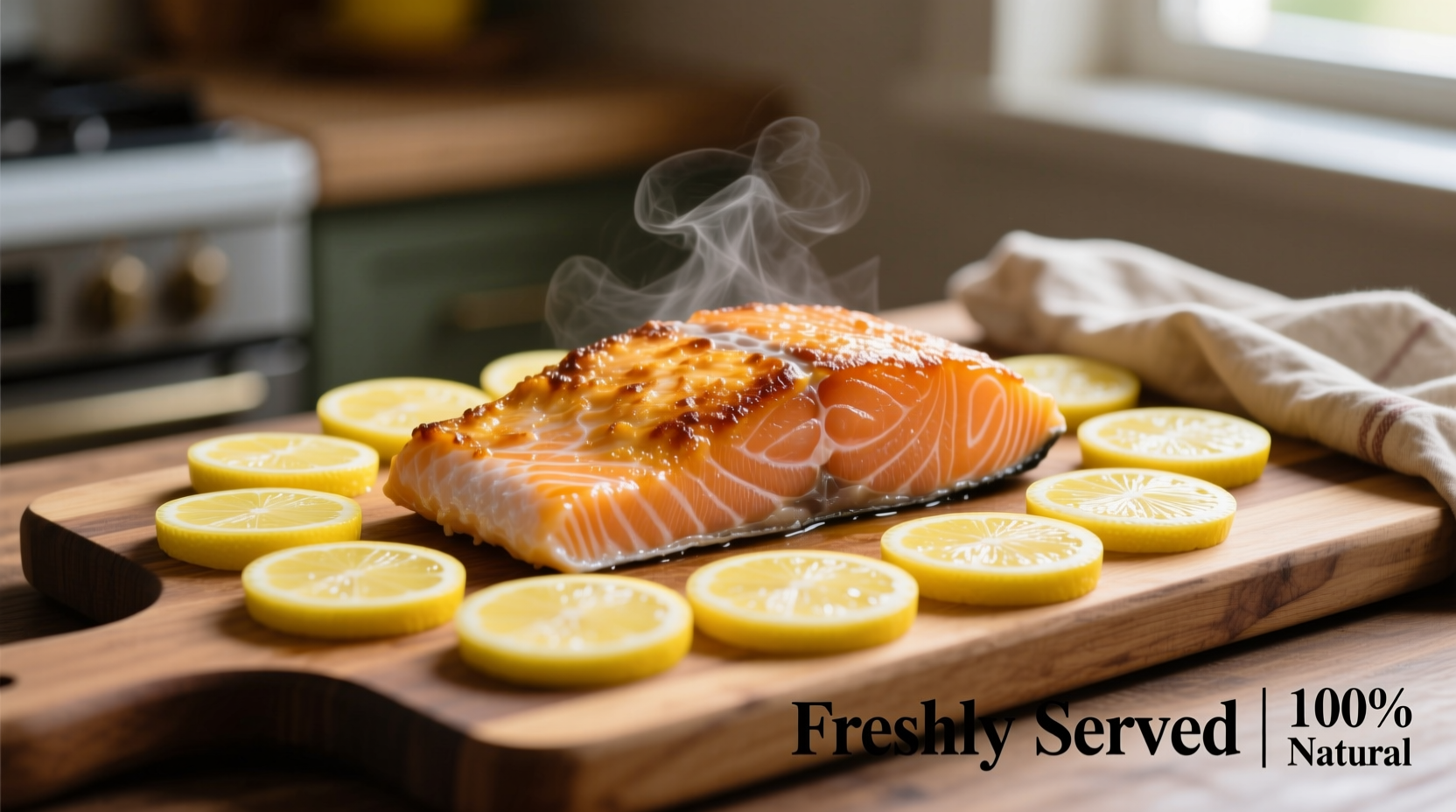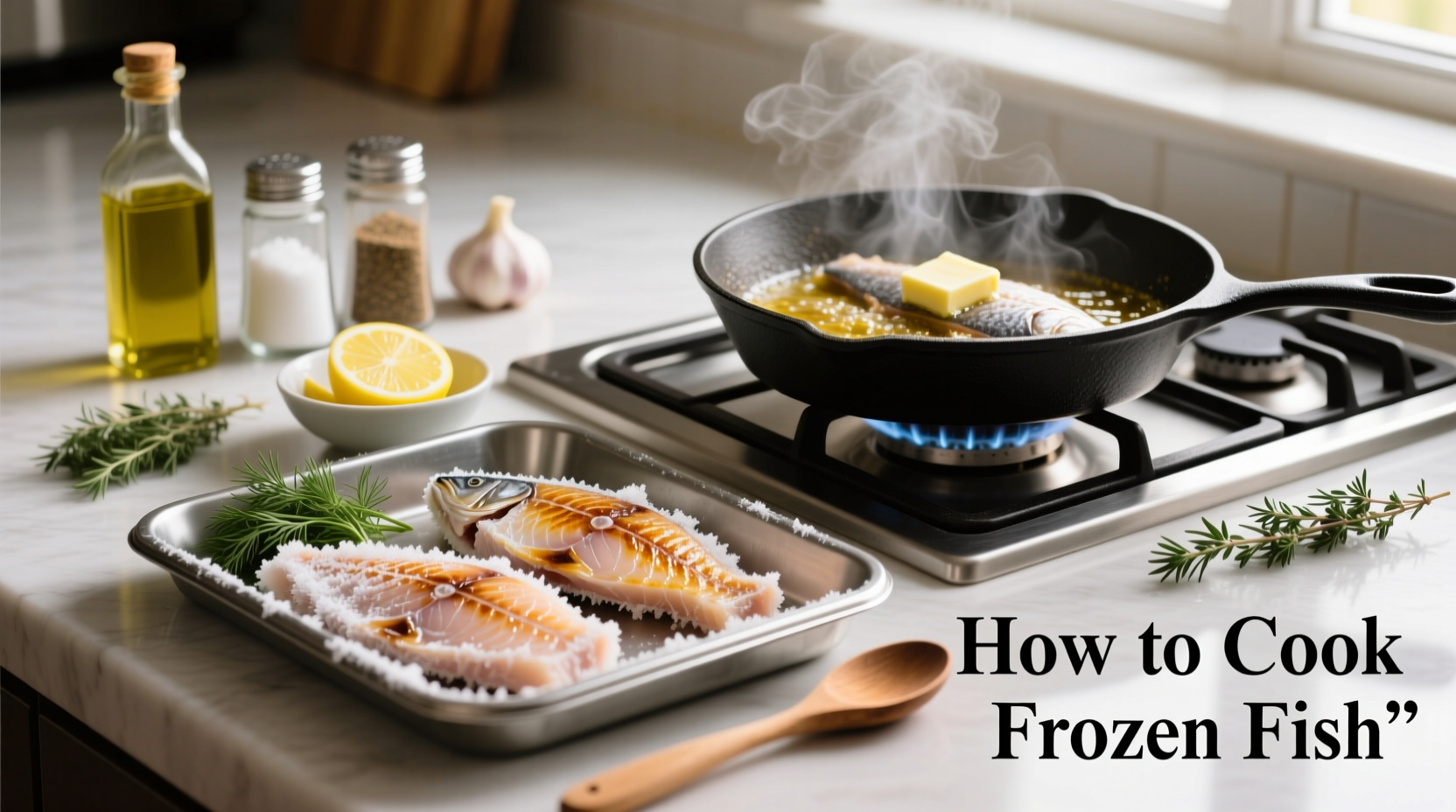Discover how to cook frozen fish safely and deliciously without the extra step of thawing. This comprehensive guide delivers tested methods that guarantee moist, flavorful results every time - whether you're baking, pan-frying, or air frying your frozen seafood.
The Science Behind Cooking Frozen Fish
Cooking fish directly from frozen isn't just convenient - it's scientifically sound when done correctly. The key lies in understanding thermal transfer principles. When frozen fish hits a hot cooking surface, the exterior forms a protective barrier while the interior thaws gradually, preventing the moisture loss that often occurs during improper thawing.
According to the FDA Food Code, seafood must reach an internal temperature of 145°F (63°C) for safe consumption. Cooking from frozen requires slightly longer cooking times but follows the same safety standards as thawed fish.
| Cooking Method | Temperature | Time for Frozen Fish | Thawed Fish Time |
|---|---|---|---|
| Baking | 400°F (204°C) | 18-22 minutes | 12-15 minutes |
| Pan-Frying | Medium-High | 8-10 minutes per side | 4-5 minutes per side |
| Air Frying | 380°F (193°C) | 12-15 minutes | 8-10 minutes |
Essential Preparation Steps
Before cooking, properly prepare your frozen fish for optimal results:
- Check packaging integrity - Ensure no freezer burn or damaged packaging
- Rinse under cold water - Briefly wash ice crystals from the surface
- Dry thoroughly - Use paper towels to remove excess moisture
- Season after drying - Salt and spices adhere better to dry surfaces

Best Cooking Methods for Frozen Fish
Baking: The Most Foolproof Method
Baking frozen fish produces consistently excellent results with minimal effort. Preheat your oven to 400°F (204°C). Place fish on a parchment-lined baking sheet, brush with oil, and season. Bake for 18-22 minutes until the internal temperature reaches 145°F (63°C). The higher oven temperature compensates for the frozen state while ensuring proper browning.
Pan-Frying: For Crispy Results
For crispy-skinned results, pan-frying works well with frozen fish. Heat oil in a heavy skillet over medium-high heat. Place fish skin-side down (if applicable) and cook for 8-10 minutes before flipping. The extended cooking time allows the fish to thaw while developing a golden crust. Avoid moving the fish too soon - patience ensures proper searing.
Air Frying: Quick and Crisp
Air frying frozen fish delivers restaurant-quality crispiness in minimal time. Preheat your air fryer to 380°F (193°C). Lightly oil the fish and place in the basket without overcrowding. Cook for 12-15 minutes, flipping halfway through. The circulating hot air creates a crispy exterior while gently thawing the interior.
Troubleshooting Common Issues
Preventing Sogginess
The most common problem when cooking frozen fish is excess moisture. Combat this by:
- Drying fish thoroughly before cooking
- Using higher cooking temperatures than for thawed fish
- Avoiding overcrowded pans that trap steam
- Placing fish on a wire rack when baking to allow air circulation
Achieving Proper Browning
Frozen fish often resists browning due to surface moisture. For golden results:
- Pat fish extremely dry before seasoning
- Use a neutral oil with high smoke point (avocado, canola)
- Preheat your cooking surface thoroughly
- Consider a light cornstarch dusting for extra crispness
Flavor Enhancement Techniques
Maximize flavor when cooking frozen fish with these professional tips:
- Oil-based marinades only - Water-based liquids won't adhere to frozen surfaces
- Add delicate herbs after cooking - Frozen fish can't absorb flavors during cooking
- Finish with acid - A squeeze of lemon or vinegar brightens flavors after cooking
- Build flavor layers - Sauté aromatics first, then add fish to the same pan
When Not to Cook From Frozen
While most fish types work well cooked from frozen, certain situations require thawing first:
- Very thick cuts (over 1.5 inches)
- Delicate fish like sole or flounder
- When precise presentation matters (for special occasions)
- If the fish shows significant freezer burn
For these cases, thaw fish in the refrigerator for 24 hours before cooking for best results.











 浙公网安备
33010002000092号
浙公网安备
33010002000092号 浙B2-20120091-4
浙B2-20120091-4